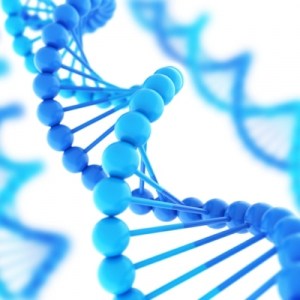
A slew of recent cases has brought DNA profiling into question as criminal evidence. The Australian reports on the case of Benjamin James Forbes, whose appeal on a solely DNA-based rape conviction in the ACT will be heard by the High Court. Victoria alone has had three contamination cases, including the rape conviction of Victorian man Farah Jama, overturned after likely DNA contamination came to light. In Perth, evidence was contaminated with the DNA of a police forensic investigator.
The Australian Institute of Criminology has released a report showing that jurors are 23 times more likely to convict when DNA evidence is present. With all this confusion, it’s hard to know who you should allow to swab you, and what trouble you might end up in. With the assistance of University of Melbourne Associate Professor Jeremy Gans, an expert in DNA criminology, Crikey has done the legwork for you.
What does a “match” mean?
A “match” doesn’t mean that two sets of DNA are identical. Each person carries a vast quantity of DNA, and matching the whole thing would be a human genome project of its own. The best that current testing procedures can manage is to compare specific small sections. By matching unrelated sections, and comparing the data to patterns in DNA databases, forensics officers arrive at a “likelihood match probability” — an estimate of how likely it would be for a random person on the street to have matching results. To stretch a metaphor, it’s like looking up a dozen streets in a street directory and comparing the number and colour of the houses to work out if you’re in Newcastle.
How does it work?
The standard method for most forensic testing, STR, involves copying the DNA to create a sample big enough for testing. This process, called PCR, is a blessing and a curse — any contamination will be replicated along with the real DNA, but it’s extremely useful for getting results on small or degraded samples. Small sections are then examined for repeating sequences, and the number of repeats compared. In America, 13 points of comparison are used, plus a male/female check. The equipment used by Victoria Police’s Forensic Services Division tests nine, plus a male/female check.
Other more esoteric methods abound, including the controversial “low copy number” DNA testing process. This involves growing trace amounts of DNA into a usable sample by running it through multiple PCR cycles. Theoretically, low-copy could identify someone by just the DNA left by touching a surface, but every PCR cycle multiplies the chances of contamination.
Mitochondrial DNA matching, also controversial, can match a DNA sample to a suspect or any direct matrilineal relation (for example, mother or aunt’s son). Mitochondrial DNA is highly mutable, but there’s usually a lot more of it to test. SNP testing — single nucleotide polymorphism — is a DNA test that checks one single base pair in the DNA. Previously the domain of health testing for various genetic abnormalities and traits, it’s becoming more widely used in testing DNA in criminal cases.
What are the flaws?
Contamination is a huge issue with DNA. Strands of DNA get everywhere, with all the mobility of a dust mote. Just walking through a room will leave behind your DNA. Most lab DNA contamination is fairly obvious, as in the case of a rape victim whose DNA was detected on evidence in the Jaidyn Leskie case after evidence was processed in the same lab. Modern methods increase the likelihood of contamination, and while some states have taken precautions (Queensland Police requires all their forensics officers to volunteer a DNA sample for elimination), recent cases suggest that it’s a problem that will need to be addressed.
DNA is fragile. If any of the test points of the crime scene DNA are degraded to the point where they’re unreadable, the result is described as a “partial match”. Partial matches are dangerous; because of the way the statistics work, every lost information point pushes up the likelihood the match is a coincidence. Partial matches are common and continue to be used in Australian courtrooms.
It’s also impossible to absolutely rule out an accidental mismatch. Identical twins are plentiful; relatives are more likely to be a match. The “one in a million” figure means most of us will have around 20 forensic DNA matches around Australia. “The danger in the Forbes case is that there was someone else in the ACT that day has who the same DNA markers,” says Gans.
When a DNA sample is run through a database, “cold hits” may come up — people with matching DNA points who were previously not linked to the crime. Cold hit DNA is considered less significant as evidence, but occasionally police may build a case against a cold hit.
The last major problem with DNA evidence is the assumption that DNA found at the crime scene must relate to the crime. DNA evidence is, by definition, always circumstantial. To be really convincing, DNA evidence needs to be supported by other evidence.
What are the advantages?
Despite its flaws, DNA testing continues to be the most scientifically reliable evidence available to most courtrooms. Eyewitnesses forget, memories are altered, stories are incomplete. “Compared to the kind of evidence that gets thrown around in a courtroom, nuclear DNA is the gold standard,” says Gans. “It’s not infallible, but it’s just so good.”






